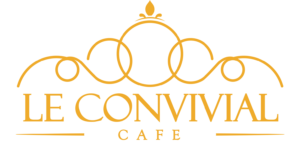Our main goal was to identify associations (linear and quadratic) of BMI and characteristics of eating behavior (CR, DIS) with BOLD activation during volitional regulation of food craving. We tested separate regression models to individually assess the relationship of BMI, CR, DIS or regulation success and the respective regulation contrasts (REGULATE_TASTY>ADMIT_TASTY, REGULATE_TASTY>REGULATE_NOT_TASTY) including age (analyses of BMI, CR, DIS, regulation success) or age and BMI (analysis of BMI 2 ) as covariates. To assess the relationship of craving intensity and appetitive brain activity, separate regression models were tested on the respective craving contrasts (ADMIT_TASTY>REGULATE_TASTY, ADMIT_TASTY>ADMIT_NOT_TASTY). Please see Supplementary Table III for a summary of performed regression analyses. Second-level maps were thresholded voxelwise at P<0.001 and corrected for multiple comparisons at a cluster threshold of P<0.05 (family-wise error) for the whole brain.
Practical relationships investigation
Functional connectivity was assessed by means of psychophysiological interaction (PPI) analysis. 28 Source regions were based on the https://sugardaddydates.net/sugar-daddies-usa/sc/charleston/ above-mentioned regression analysis of BOLD activation and BMI, our primary research focus. Individual BOLD signal time series within 4-mm spheres surrounding detected peak coordinates were extracted (based on the inverted U-shaped relationship of BMI and REGULATE_TASTY>ADMIT_TASTY, please see ‘Efficiency’ section and Table 2 for details). General linear models were estimated separately for every source region including the following regressors: Time course of the respective source region (physiological vector), a vector coding for the main effect (psychological vector; REGULATE_TASTY>ADMIT_TASTY; with the former term weighted as +1 and the latter one weighted as ?1), and the PPI term (element-by-element product between the time course of the source region and the vector coding the main effect). The models also included realignment parameters as nuisance regressors. Single-subject contrasts for the PPI regressors were calculated. In the second-level analysis, we aimed to identify regions whose functional connectivity was related to BMI (linear and quadratic) or characteristics of eating behavior (CR, DIS). Therefore, the PPI terms were regressed on these measures in separate multiple regression analyses. Second-level models also included the regressors of no interest mentioned under subsection ‘Analysis of BOLD response’. Second-level maps were thresholded voxelwise at P<0.001 and corrected for multiple comparisons at a cluster threshold of P<0.05 (family-wise error) for the whole brain. Clusters were considered to be significant at P<0.017 (Bonferroni adjustment to account for the number of investigated seeds). Please see Supplementary Table III for a summary of performed regression analyses.
Results
We noticed an effective confident correlation off Body mass index and you may DIS (R 2 =0.285, P>0.001, Pearson relationship, Additional Profile Ia). Multiple regression analysis shown a terrible organization out-of Bmi dos that have CR (Roentgen dos =0.151, P=0.038, covariate Body mass index; Secondary Figure Ib), proving an inverted U-shaped matchmaking. Urge intensity don’t correlate with Bmi (R=?0.206, P=0.185, Pearson relationship). We discover a trend out of an awful correlation anywhere between regulation success and you may Bmi (R=?0.295, P=0.055, Pearson relationship). Get a hold of Dining table step 1 getting detailed statistics.
Strategies
To control the need, all professionals (especially obese volunteers) envisioned the latest bad enough time-term effects out-of dinner the new illustrated palatable eating. Very members transformed ranging from various other regulation procedures during the course of this new experiment (select Secondary Table IV for details on means use). Whenever coached in order to know, all of the people thought preference or surface of one’s showed foodstuff.
Dating ranging from Ambitious passion and you may Body mass index, restaurants decisions, craving strength or subjective control profits
Activity in a cluster comprising left putamen, amygdala and insula was nonlinearly (inverted U-shaped) related to BMI during volitional regulation devoid of craving influences (REGULATE_TASTY>ADMIT_TASTY; Table 2, Figure 2). Activation during regulation specific to hedonic food (REGULATE_TASTY>REGULATE_NOT_TASTY) was unrelated to BMI. We found no linear relationships with BMI. Craving intensity correlated positively with activity in the right hippocampus/amygdala during craving devoid of volitional regulatory influences (ADMIT_TASTY>REGULATE_TASTY; Table 2, Supplementary Figure X), but did not correlate with activation during craving specific to hedonic food (ADMIT_TASTY>ADMIT_NOT_TASTY). Neither subjective regulation success nor measures of eating behavior were significantly related to task-related BOLD activity. The above-mentioned results indicate some lateralization of the findings. However, when a less strict threshold was applied, bilateral BOLD activation of all mentioned regions associated with BMI and craving intensity was observed (relationship of BOLD and BMI: t-values thresholded at P<0.05, uncorrected; relationship of BOLD and craving intensity: t-values thresholded at P<0.001, uncorrected).

![Logo-LeConvivial-Jaune COULEUR[2305843009214242198] Logo-LeConvivial-Jaune COULEUR[2305843009214242198]](http://leconvivialcafe.com/wp-content/uploads/2021/04/Logo-LeConvivial-Jaune-COULEUR2305843009214242198.png)




